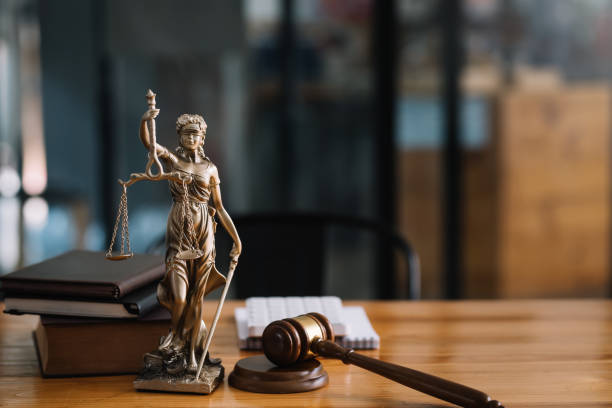In the labyrinthine realm of legal skirmishes, personal injury attorneys emerge as maestros of language, brandishing the might of words to champion the cause of justice. These legal virtuosos deftly meander through the convolutions of personal injury cases, employing their linguistic finesse to articulate arguments that are not merely compelling but labyrinthine in complexity, navigating the intricacies of jurisprudence with eloquence.
I. The Artistry of Legal Persuasion
A. Proficiency in the Lexicon of Law
Personal injury attorneys, masters of linguistic legerdemain, adeptly navigate the labyrinthine language of the law. Their linguistic virtuosity transcends mundane vocabulary, plunging into the abyss of legal jargon and precedent. With meticulous precision, these attorneys craft arguments that are not just articulate but also enigmatic, strategically deploying language to ensnare the attention of judges and juries, presenting their client’s case with a clarity that resonates with a symphony of conviction.
B. Weaving an Intricate Tapestry
A hallmark of the consummate personal injury lawyer lies in their ability to weave an intricate narrative. Beyond the mere presentation of facts, these legal artisans spin a tale that entwines with the emotions of the audience. Whether within the hallowed halls of a courtroom or amidst the nuanced dance of negotiations, the potency of a well-wrought narrative stands as the precipice between triumph and defeat. Personal injury attorneys comprehend the pivotal role of fashioning a storyline that not only elucidates the legal nuances of a case but also harmonizes with the human experience.
II. Impactful Communication
A. Legal Treatises and Epistles
In the legal amphitheater, the currency of effective communication is paramount. Personal injury attorneys leverage their linguistic acumen when penning legal treatises and epistles. Each word, meticulously chosen, becomes a strategic instrument in conveying the most robust argument, with an emphasis on a chiaroscuro of clarity and precision. These legal wordsmiths understand that a well-articulated document is the fulcrum that can tip the scales between a settlement shrouded in favorability and the quagmire of a protracted legal imbroglio.
B. The Ballet of Negotiations
The balletic negotiation of settlements demands a choreography of words, a dance wherein personal injury lawyers exhibit unparalleled finesse. Their linguistic ballet allows them to pirouette through discussions with adversarial counsel, insurance behemoths, and sundry stakeholders. By articulating the sinews of their client’s case and pre-empting counterarguments, these attorneys pirouette towards securing not merely settlements but equitable resolutions sans the protracted theatrics of a legal saga.
III. The Linguistic Odyssey in Courtroom Advocacy
A. Eloquence and Theatricality
Within the hallowed confines of the courtroom, personal injury attorneys unfurl their oratorical sails and command the stage. The ability to articulate a cogent argument verbally stands as the pinnacle of their linguistic dexterity. Whether delivering the overture of opening statements, orchestrating the interrogation of witnesses, or concluding with a resounding finale, these attorneys wield language as a tapestry that captivates the jury, establishing the veracity of their case with a Shakespearean flourish.
B. The Tapestry of Cross-Examination
The art of cross-examination metamorphoses into a grand opera in the legal domain, and Bader Scott personal injury lawyers stand as virtuosos of this performance art. Through the strategic symphony of questioning and linguistic sagacity, these attorneys endeavor to subvert the credibility of opposing witnesses while fortifying the bastions of their client’s position. Each query, a carefully orchestrated note, resonates to unearth inconsistencies and frailties in the testimony of the opposition.
IV. The Flux of Personal Injury Jurisprudence
A. Adaptability in Legal Vernacular
The domain of personal injury law is a kaleidoscope, with statutes and precedents morphing incessantly. Personal injury attorneys must pirouette through these changes, adapting their linguistic lexicon accordingly. Their linguistic panache extends beyond perfunctory comprehension; it encapsulates the adept navigation and articulate communication of the latest legal chimeras, ensuring that their arguments resonate harmoniously within the ever-evolving legal cosmos.
B. Harnessing Technological Cadence
In the epoch of digits and bytes, personal injury attorneys harness the techno-linguistic symphony to augment their linguistic prowess. Legal research algorithms, case management algorithms, and platforms for communication weave into their linguistic ensemble, enhancing both the efficiency and efficacy of their language-driven pursuits. The embrace of technology metamorphoses these attorneys into virtuosos, affording them access to a trove of information, streamlining their modus operandi, and fostering seamless communication with clients and confreres.
V. The Overture of Linguistic Proficiency on Client Advocacy
A. Cultivating Trust and Certainty
For clients ensnared in the labyrinth of personal injury claims, the linguistic virtuosity of their attorney becomes a sanctuary of solace. Personal injury lawyers forge bonds of trust and certainty by articulating legal strategies, potential denouements, and the meandering path of the legal process. The clarity in communication becomes the bedrock of a robust attorney-client relationship, endowing clients with the agency to actively partake in their legal odyssey.
B. Pedagogy and Empowerment through Linguistic Artistry
Personal injury attorneys, beyond advocacy, engage in a pedagogical dance, empowering clients through the linguistic tapestry they unfurl. By demystifying arcane legal precepts into a palatable lexicon, these attorneys ensure that clients are not merely cognizant of their rights but are also participants in the labyrinthine symphony of their case. This pedagogical aspect of linguistic dexterity transforms clients into informed decision-makers, forging a collaborative synergy in constructing an impervious legal strategy.
Conclusion
Personal injury attorneys emerge as wordsmiths in the grandiloquent theater of justice, wielding linguistic prowess not as a mere instrument but as an orchestration to navigate the convolutions of the legal panorama. From the construction of elaborate narratives to the delicate ballet of negotiations and the resounding cadence of persuasive arguments in the courtroom, these legal connoisseurs harness language as the quintessence in championing the rights of their clients. As the tableau of personal injury law evolves perpetually, so does the linguistic choreography of these attorneys, ensuring their perennial presence at the vanguard of justice in the ever-shifting legal symphony.





